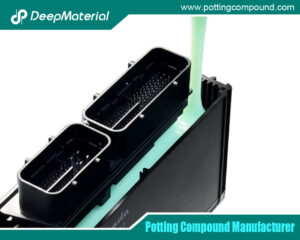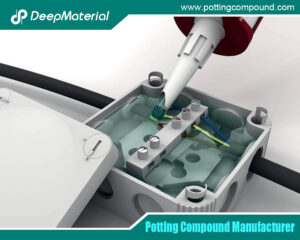

Automatic Fire Suppression System for Vehicles
- Electronic Potting Material Manufacturer
- September 23, 2024
- Acrylic Conformal Coating, automatic fire suppression system, automatic fire suppression system for vehicles, circuit board potting compound, circuit board potting compounds, Connector Potting Compound, deepmaterial potting compound, electrical potting compound, Electronic Conformal Coating, Electronic Encapsulant Potting Compound, Electronic Epoxy Encapsulant Potting Compound, Electronic Epoxy Potting Compound, electronic potting compound, Electronic Potting Compounds Manufacturer, Encapsulant Potting Compound, Encapsulants and Potting Compounds Suppliers, Epoxy Encapsulant Potting Compound, epoxy potting compound, epoxy potting compound manufacturers, Flexible Potting Compound, Industrial Conformal Coating, LED Potting Compound, pcb conformal coating, PCB Potting Compound, potting compound, Silicone Conformal Coating, Urethane Conformal Coating, UV Cure Conformal Coating, UV Cure Potting Compound, Waterproof Conformal Coating, waterproof potting compound
Automatic Fire Suppression System for Vehicles
Fire hazards in vehicles are a significant concern across various industries, including public transportation, logistics, mining, and construction. Vehicles, especially those carrying flammable materials or operating in high-risk environments, are susceptible to fires caused by fuel leaks, electrical faults, engine overheating, etc. An automatic fire suppression system (AFSS) is a critical safety feature designed to detect and extinguish vehicle fires, mitigating damage and potentially saving lives. This article delves into the importance, components, working principles, types, and benefits of automatic fire suppression systems for vehicles.
The Importance of Automatic Fire Suppression Systems in Vehicles
Personal, commercial, or industrial vehicles are integral to daily operations across various sectors. However, the risk of fire in vehicles poses a threat to the car and the safety of the passengers, cargo, and surroundings. The following points highlight the importance of AFSS in cars:
- Safety of Occupants and Passengers: Passenger safety is paramount in public transportation, including buses and trains. An uncontrolled fire can lead to fatalities and severe injuries. An automatic fire suppression system can detect a fire in its early stages and activate suppression mechanisms to protect passengers.
- Protection of Valuable Assets: Commercial and industrial vehicles, such as trucks, mining equipment, and construction machinery, often carry valuable cargo or are themselves high-value assets. A fire can result in significant financial losses. An AFSS provides an added layer of protection to these assets.
- Compliance with Regulations: Many industries are subject to strict safety regulations that mandate the installation of fire suppression systems in vehicles. Compliance with these regulations is a legal requirement and a demonstration of a company’s commitment to safety.
- Minimizing Downtime: In industries like mining and construction, vehicle downtime can lead to substantial losses. A fire suppression system can prevent extensive damage to the vehicle, allowing for quicker repairs and reducing operational downtime.
- Environmental Protection: Vehicle fires can cause ecological damage, mainly in sensitive areas or involving hazardous materials. An AFSS can help contain the fire and minimize its environmental impact.
Components of an Automatic Fire Suppression System
An AFSS is a sophisticated system composed of several vital components that work together to detect and suppress vehicle fires. These components include:
- Fire Detection Sensors: The system relies on various sensors to detect the presence of a fire. These can include:
- Heat Detectors: These sensors detect an increased temperature within the vehicle and trigger the suppression system if the temperature exceeds a predefined threshold.
- Flame Detectors: These sensors detect the presence of flames and activate the system.
- Smoke Detectors: Smoke detectors identify the presence of smoke, which is often an early indicator of fire.
- Control Panel: The control panel acts as the system’s brain, receiving signals from the sensors and deciding when to activate the suppression system. It is typically equipped with alarms and indicators to notify the vehicle operator of the fire and the system’s status.
- Suppression Agent: The suppression agent is the substance used to extinguish the fire. Depending on the application, various agents can be used, including:
- Dry Chemical Powders: These powders extinguish fires involving flammable liquids and electrical components.
- Foams: Fire suppression foams are commonly used for fires involving flammable liquids. They form a barrier that prevents oxygen from reaching the fuel.
- Gaseous Agents: In some cases, gases like CO2 or FM-200 are used, particularly in enclosed spaces, as they displace oxygen and suffocate the fire.
- Discharge Mechanism: The discharge mechanism releases the suppression agent when a fire is detected. This can include:
- Nozzles: These are strategically placed throughout the vehicle to ensure the even distribution of the suppression agent.
- Distribution Network: A series of pipes or hoses that deliver the agent from the storage tank to the nozzles.
- Manual Activation: While the system is automatic, it often includes a manual activation option that allows the vehicle operator or passengers to trigger the system if they detect a fire before the sensors do.
- Alarm System: The alarm system is crucial for alerting the vehicle occupants of a fire. It includes audible alarms and visual indicators, such as flashing lights.
Working Principles of an Automatic Fire Suppression System
The operation of an AFSS in vehicles involves several steps that ensure quick and effective fire suppression. The system operates on the following principles:
- Detection: The system’s sensors continuously monitor the vehicle for signs of a fire. This could include detecting heat, smoke, or flames. Once a sensor identifies a fire, it sends a signal to the control panel.
- Assessment: The control panel assesses the situation based on the input from the sensors. It determines whether the detected condition meets the criteria for activating the suppression system.
- Activation: If the control panel confirms the presence of a fire, it activates the suppression system. This involves opening the valves that release the suppression agent from the storage tank into the distribution network.
- Suppression: The suppression agent is discharged through the nozzles, covering and extinguishing the fire. The type of agent used, and its distribution depend on the nature of the fire and the specific vehicle application.
- Alerting: Simultaneously, the system triggers the alarm to notify the vehicle occupants of the fire. This provides them with the opportunity to evacuate the vehicle safely.
- Post-Suppression Monitoring: After the fire is extinguished, the system may continue monitoring the situation to ensure the fire does not reignite. Some systems include additional sensors to detect any remaining heat or embers.
Types of Automatic Fire Suppression Systems for Vehicles
AFSSs are tailored to meet the specific needs of different kinds of vehicles and applications. The following are the common types of AFSSs used in cars:
- Engine Compartment Fire Suppression Systems:
- Application: Designed to protect the engine compartment, a common source of vehicle fires due to fuel leaks, electrical faults, and overheating.
- Suppression Agents: These systems often use dry chemical powders or gaseous agents that can quickly suppress fires without damaging the engine components.
- Passenger Compartment Fire Suppression Systems:
- Application: These systems are used in buses, trains, and other passenger vehicles. They protect the occupants from fires that may start within the passenger area.
- Suppression Agents: Typically, non-toxic gaseous agents or delicate water mist systems are used to minimize harm to passengers.
- Cargo Compartment Fire Suppression Systems:
- Application: Designed for trucks, aircraft, and other vehicles transporting goods, especially hazardous or flammable materials.
- Suppression Agents: Foam or dry chemical systems commonly contain and suppress fires in cargo areas.
- Specialized Fire Suppression Systems for Heavy Equipment:
- Application: Heavy machinery used in mining, construction, and agriculture often operates in environments with high fire risks. These systems are robust and designed to withstand harsh conditions.
- Suppression Agents: Heavy equipment systems may use a combination of dry chemicals and foams to address fires involving fuel, hydraulic fluids, and other combustible materials.
- Battery Compartment Fire Suppression Systems:
- Application: With the rise of electric vehicles (EVs), there is a growing need for fire suppression systems that can address fires in battery compartments, which pose unique challenges due to the risk of thermal runaway.
- Suppression Agents: These systems may use advanced cooling agents or chemical extinguishers designed to combat battery fires.
Benefits of Automatic Fire Suppression Systems in Vehicles
Implementing AFSSs in vehicles offers numerous benefits, contributing to safety, cost savings, and operational efficiency. The key benefits include:
- Enhanced Safety: The primary benefit of AFSS is the protection it provides to vehicle occupants and surrounding environments. By detecting and suppressing fires in their early stages, these systems reduce the risk of injuries and fatalities.
- Asset Protection: Vehicles, especially those used in commercial and industrial settings, represent significant investments. An AFSS helps protect these assets from fire damage, extending their lifespan and reducing replacement costs.
- Regulatory Compliance: Installing AFSSs ensures compliance with safety regulations, which is particularly important in industries where vehicle fires pose a high risk. Compliance helps avoid legal penalties and enhances a company’s reputation for safety.
- Reduced Downtime: In industries where vehicle availability is critical to operations, such as mining and logistics, an AFSS can minimize downtime by preventing extensive fire damage. This allows vehicles to return to service more quickly after an incident.
- Lower Insurance Costs: Vehicles equipped with fire suppression systems may qualify for lower insurance premiums, as insurers consider them less risky. This can result in significant cost savings over time.
- Environmental Protection: By containing fires and preventing them from spreading, AFSSs help mitigate environmental damage, particularly in sensitive areas or when hazardous materials are involved.
- Peace of Mind: Knowing that a vehicle is equipped with an automatic fire suppression system provides vehicle operators and owners peace of mind. They can operate confidently, knowing that the system will respond swiftly in a fire.
Challenges and Considerations in Implementing AFSSs in Vehicles
While the benefits of AFSSs are clear, some challenges and considerations must be addressed during their implementation:
- Cost: The installation and maintenance of AFSSs can be expensive, particularly for large fleets or specialized vehicles. However, the long-term benefits often justify the initial investment.
- System Maintenance: Regular maintenance is crucial to ensure the system’s reliability. This includes checking sensors, refilling suppression agents, and testing the system to ensure it functions correctly.
- System Integration: Integrating an AFSS into a vehicle’s existing systems, such as its electrical and control systems, can be complex. This requires careful planning and, in some cases, customization.
- False Alarms: The risk of false alarms is a concern, as they can lead to unnecessary activation of the suppression system, resulting in costs and potential disruption. Advanced sensors and control systems can help minimize false alarms.
- Customization: Different vehicles and applications have unique fire risks, requiring customized AFSS solutions. This customization can increase the complexity and cost of implementation.
- Training: Vehicle operators and passengers must be trained to respond when the AFSS activates. This includes understanding how to evacuate the vehicle safely and, if applicable, how to activate the system manually.
Future Trends in Vehicle Fire Suppression Technology
As technology advances, the field of vehicle fire suppression is also evolving. The following trends are shaping the future of AFSSs:
- Intelligent Systems: The integration of AI and IoT (Internet of Things) technologies into AFSSs is rising. These intelligent systems can provide real-time monitoring, predictive maintenance alerts, and advanced diagnostics, improving the reliability and efficiency of fire suppression.
- Advanced Suppression Agents: Research is ongoing to develop new suppression agents that are more effective, environmentally friendly, and safer for occupants. This includes agents designed specifically for electric vehicles and battery fires.
- Modular Systems: Modular fire suppression systems that can be easily adapted to different vehicle types and applications are becoming more popular. These systems offer flexibility and scalability, making them suitable for various vehicles.
- Hybrid Systems: The development of hybrid fire suppression systems that combine multiple agents (e.g., dry chemicals and foam) to tackle different types of fires is gaining traction. These systems provide comprehensive protection in diverse environments.
- Regulatory Changes: As vehicle technology evolves, particularly with the rise of electric vehicles, regulatory bodies are updating safety standards and guidelines. AFSSs must adapt to these changes to remain compliant and effective.
Conclusion
An automatic vehicle fire suppression system is an essential safety feature critical in protecting lives, assets, and the environment. With the growing complexity of vehicle technology and the increasing demand for safety in various industries, the importance of AFSSs cannot be overstated. From detecting and suppressing fires in engine compartments to protecting passengers and cargo, these systems offer numerous benefits that outweigh the challenges associated with their implementation. As technology advances, AFSSs will become even more sophisticated, providing enhanced protection for vehicles across the globe.
For more about choosing the top automatic fire suppression system for vehicles, you can pay a visit to DeepMaterial at https://www.pottingcompound.com/ for more info.
Recent Posts
- What Are the Core Differences Between Different Conformal Coating Types?
- The Benefits of Conformal Coating for Electronics Products
- Conformal Coating Spray
- UV Curing Potting Compound
- The Ultimate Guide to Electrical Potting Compound and Market Application
- The Top Polyurethane Potting Compound
- Advanced Epoxy Potting Compound for Superior Electronic Protection
- Waterproof Potting Compound: A Comprehensive Guide
- Silicone Potting Compound for Electronics
- Potting Compound vs. Epoxy: A Comprehensive Comparison
Tags
Related Posts


The Benefits of Conformal Coating for Electronics Products

Conformal Coating Spray

UV Curing Potting Compound




